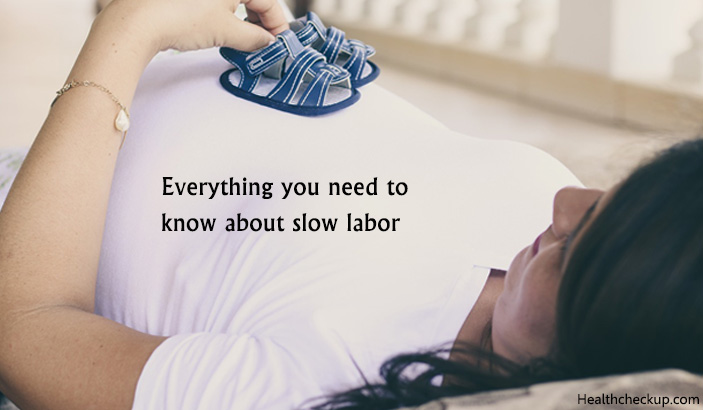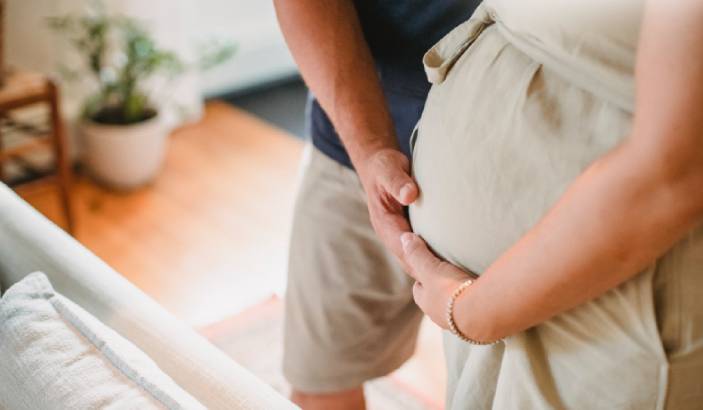Labour is usually accompanied by a series of intense and repeated muscle contractions. They are responsible for pushing the baby out of the womb into the birth canal during birth. How fast a woman gives birth depends on a number of factors and usually varies from one woman to the other.
For first time mothers, labour takes about 12 – 18 hours on average while for subsequent pregnancies it takes about 6-8 hours. Labour moves more quickly if you have given birth before. What about labour that lasts for more than 20 hours? And what are the signs of slow labour?
What is Slow Labour?
Slow labour, also referred to as failure to progress labour, happens when labour is experienced for approximately 20 hours or more and beyond 14 hours for mothers who have previously given birth. A slow labour or a prolonged labour can be exhausting and often alarming but it rarely leads to serious complications. However, it should not be ignored, talk to your healthcare provider to run the necessary test to identify the cause of the issue.
Slow labour is also used when the mother is dilating at an interval less than 1-2 cm per hour. Generally, during active labour, it takes about 3 to 7cm on average. According to a recent study, about 1% of the 1st time mothers experience labour for more than 20 hours.
Causes of Slow Labour
Below are some factors that can contribute to a slow labour. Some may not be serious and can be managed easily while others may need serious medical attention to managing.
- The position of the baby is not favourable
- You are exhausted or dehydrated
- You have weak and infrequent contractions or have constant intensity instead of getting stronger
- Some medication, for example, those used for anesthesia may prolong labour especially in the second stage
- Overdistention of the Mother’s Uterus- This commonly happens if the mother is carrying twins
- Slow labour can also happen if the mother has not fully evacuated her bowels or bladder
- Cephalopelvic Disproportion– The fetal head is larger than the maternal birth canal size. Also, when the pelvis narrower and it’s not enough for the baby’s head to pass
Signs of Slow Labour
Here, we are going to discuss about the signs of a slow labour. They include
- Labour last for approximately more than 18 hours. An average of 20 hours for first time mothers and about 14 hours for subsequent mothers.
- The mother usually feels distressed and exhausted. Dehydration may experience as the mother’s mouth may get dry due to much mouth breathing
- The prolonged and excessive pressure exposed in the ligaments and the back muscles may cause pain at the sides and back of the mother. Usually, it radiates to the thighs instead of the uterus in the abdomen
- The mother may feel severe, prolonged, and frequent pain initially which later reduces and feels very minor as the mother’s muscles tend to get fatigued.
- The pulse rate may increase due to stress, dehydration, and exhaustion
- Ketosis can happen as a result of too much starvation
- A change in the cervical dilation which is less than 1cm. per hour for about 2 hours in a row can be experienced
- Fetal distress can develop during a slow labour
- The large intestines enlarge and can be felt on both sides of the uterus. They are large and thick structures that are filled with air, if tapped they produce a hollow sound of drums.
- The uterus usually feels tender and it doesn’t fully relax between contractions.
- The membranes may rupture early or not. During early raptures, the mother faces the risk of infection of the contents of the uterine in case the essential antibiotics are not provided.
- Less than 3 contractions happening within a 10 minute period can be experienced. Usually, the contractions last for less than 40 seconds
- The baby’s progression and the descent into the birth canal is constant or very little after 3 hours of pushing regardless of the fully dilated cervix.
How to Manage Slow Labour
Consider Using the following Tips if Experiencing Slow Labour
-
Stay Hydrated
Dehydration complicates matters by decreasing the intensity and the effectiveness of the contraction. It’s important that you drink clear fluids during labour.
-
Ease your Emotional Needs
It’s important that you remain calm in the case of a slow labour. Your body is expected to find its way out during labour and even though it may happen at a slower pace, you should be patient.
-
Get Support
If you are experiencing slow labour, talk to someone and have someone stay with you to avoid stressing yourself thereby causing more delay of the labour.
-
Distract Yourself
Instead of timing each and every contraction that occurs, you can distract yourself by watching a movie, listening to music, or playing a game. This may help you take the issue more lightly.
-
Apply Heat
Warmth can help strengthen the contractions during a prolonged labour. A warm bath can also help to reduce slow labour pain
-
Change your Position Every 30 Minutes
You can try taking a walk, lunging, rocking, changing sleeping positions, and sitting on a birth ball among other simple activities.
-
Stimulate Your Nipples
Stimulating your nipples can increase the oxytocin hormone that is responsible for the contractions of the uterus. They should be done in between contractions.
Dangers of Slow Labour
- Operative delivery such as the use of vacuum extractors, C-section, and the use of forceps.
- Long-term risk to the baby- The baby may develop permanent injuries like cerebral palsy
- Bleeding inside of the baby’s head
- Fetal Distress- Caused by decreased oxygen that reaches to the baby
What does Slow Labour Feel Like?
During a slow labour, the mother can feel exhausted, dehydrated, and infrequent pain. Contractions are less than 3 within a period of about 10 minutes and they last for less than 40 seconds. The mother also feels the need to visit the toilet frequently. Though the labour isn’t very painful, it’s more uncomfortable and simple physical exercises are recommended. Generally, signs of slow labour at 34-37 weeks include contraction about 2 minutes apart and a slightly painful labour.
Medically Reviewed By

Catherine is a dedicated freelance health and science writer committed to excellence and professionalism. She specializes in health topics including diet and nutrition, immune-related diseases, surgery, and cancer.









